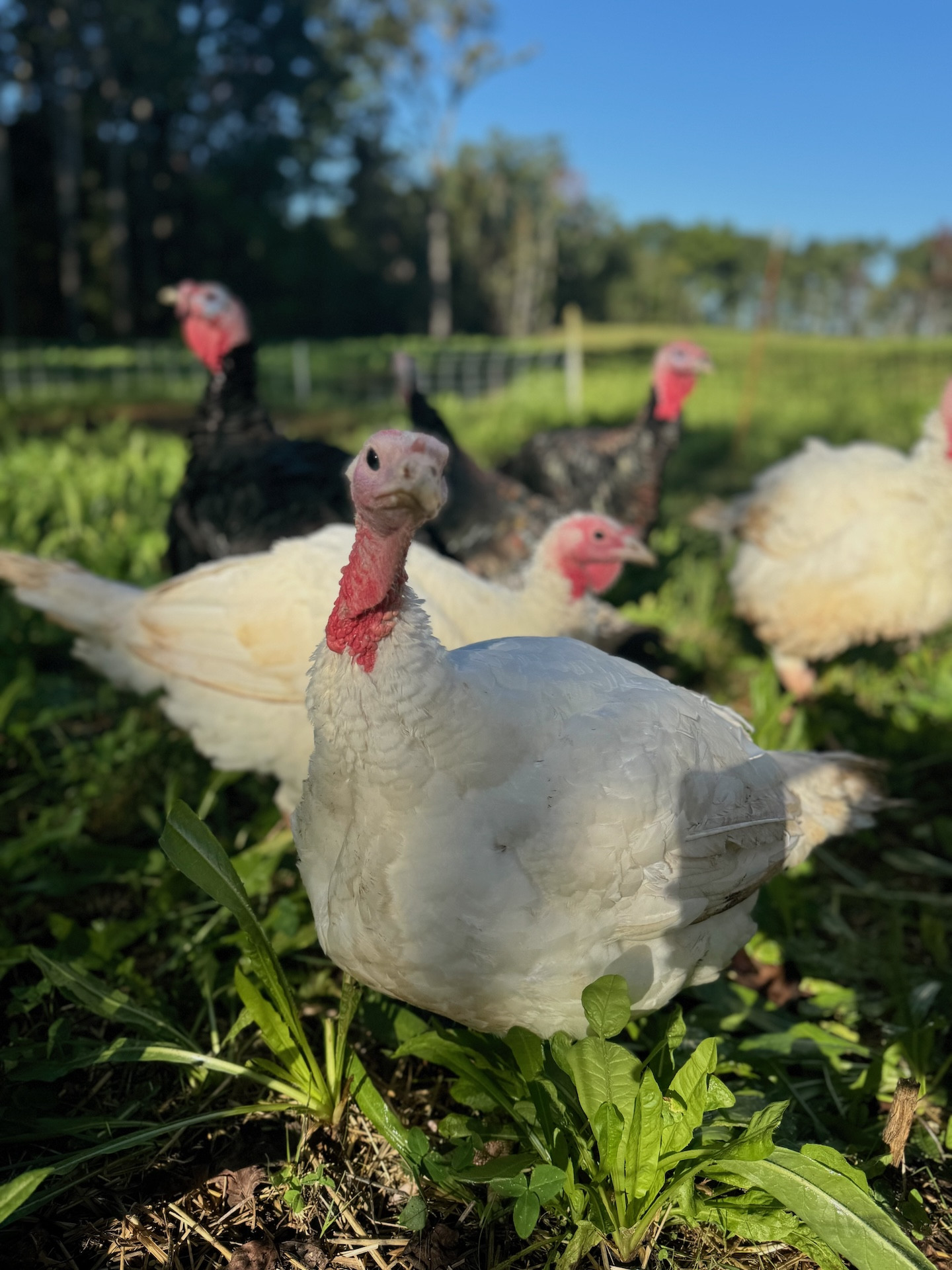Building a Reliable Water System for Our Pastures: A Step-by-Step Journey
posted on
October 14, 2024
At Epic Pastures, our commitment to regenerative agriculture means more than just restoring the land; it also requires ensuring the infrastructure supports our vision for sustainable farming. One of the most critical aspects of managing our farm is providing water access across all the pastures, ensuring our livestock always has a reliable supply. This has been a detailed process, involving careful planning, patience, and some trial and error.
In this blog, we’ll dive into the journey of setting up a water distribution system across our pastures. We’ll share the challenges and triumphs of installing 1" poly lines, using Plason quick-connect fittings, managing water pressure, and why we chose not to trench lines right away. These decisions are shaping how we manage water on our farm for the long term.
The Importance of Water Access for Livestock
Water is essential to keeping our animals healthy and ensuring that they thrive on pasture. As a regenerative farm, rotational grazing is key to our strategy, so we needed to make sure our water system could move with our livestock as they graze in different areas. This flexibility would ensure the animals have access to fresh water no matter where they are on the land.
The Planning Phase: 1" Poly Line and Quick Connect Systems
Our first major decision was choosing the materials and layout for the water system. After extensive research, we decided on a 1" polyethylene (poly) line as the backbone for the system. This type of piping is flexible, durable, and easy to install, making it ideal for our needs. It also provides a large enough diameter to ensure adequate water flow to multiple areas of the farm.
To create a modular, adaptable system, we chose Plason quick-connect fittings. These fittings allow us to easily connect and disconnect water lines as we rotate our animals to different sections of the pasture. The ability to reconfigure the system quickly means that we can always provide water exactly where it’s needed without having to commit to a rigid, permanent layout early on.
Managing Water Pressure: Well Pump, Regulators, and House Considerations
The next challenge was ensuring that the well could provide sufficient water pressure to support the system across the entire farm. We raised the well pump pressure to meet the demands of the pastures. However, with this increase came the need for careful management of the water pressure at the house.
To avoid any issues with high pressure damaging household fixtures, we installed a pressure regulator to keep the house water pressure below 60 psi. This balancing act between ensuring adequate pasture water pressure and protecting the home’s plumbing was a key step in designing a system that could serve both areas effectively.
Using Philmac Fittings: Versatility and Durability
In addition to the Plason quick-connects, we also utilized Philmac fittings for the permanent sections of the system. Philmac products are known for their reliability and ease of use, which is crucial when working in varied outdoor conditions. These fittings ensured a tight, secure connection wherever we needed it, adding durability to our overall water network.
Taking Our Time: Not Trenching Right Away
One of the biggest lessons we’ve learned in farming is that it pays to be patient. While it was tempting to start trenching the water lines as soon as possible, we held back, wanting to be confident in the layout first. Installing a water system across a large area like ours involves a lot of variables—where the animals will move, how the land will evolve, and how the system itself will perform.
By laying the poly lines above ground first, we could make adjustments to the system as we used it, learning what worked best and where improvements were needed. This method allowed us to test different setups before committing to trenching the lines into the ground. It also helped us avoid the costly and labor-intensive process of retrenching if adjustments were necessary.
Confidence in the Layout: Trenching the Water Lines
Once we felt confident in the layout, we moved forward with trenching the lines across the pastures. By this point, we had tested the system thoroughly and made small tweaks that would have been much harder to implement had we trenched too early.
Trenching the lines ensured that the water pipes were now safely below ground, protecting them from damage from livestock or weather. The final result is a clean, efficient water system that runs across the entire farm, with water available at every section where our animals will graze.
Looking Ahead
With the water system in place, we are one step closer to achieving our vision for Epic Pastures. By taking the time to plan carefully, using high-quality materials like Plason quick-connects, Philmac fittings, and durable poly lines, and being patient with trenching, we’ve built a system that is flexible, reliable, and able to grow with our farm.
Water is life on a regenerative farm, and we’re proud of the work we’ve done to ensure that our livestock will always have the water they need to thrive. As we continue to expand, we know this system will be an essential foundation for everything we do, from raising healthy animals to restoring our land.
Thank you for following our journey, and stay tuned as we continue to share more updates from the farm!


